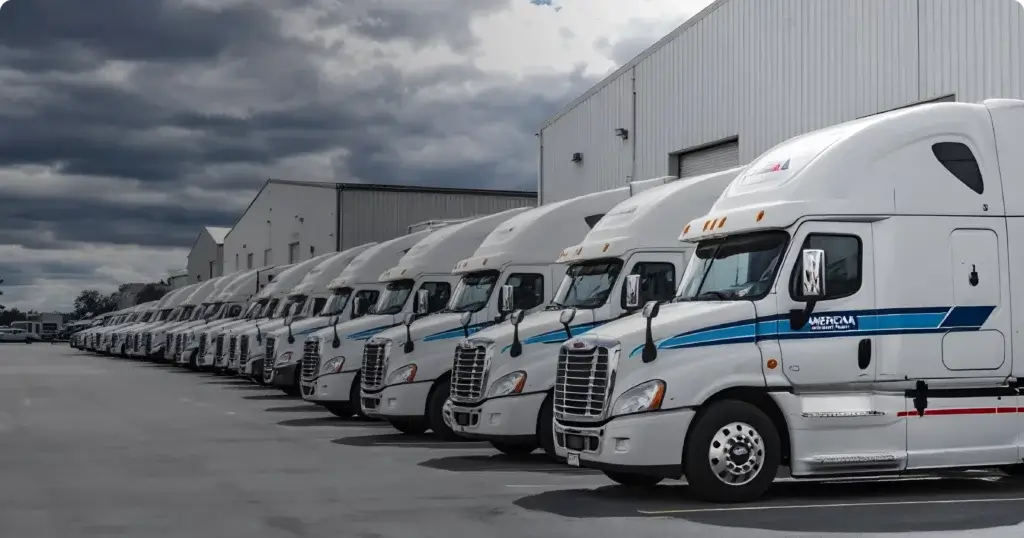According to statistics, truck accidents result in approximately 400 deaths every year. That’s a large number of avoidable fatalities and difficult for all the parties involved. Of course, such incidents have financial repercussions on trucking companies too that have to pay penalties, increased insurance premiums, and absorb the cost of delayed deliveries too. To avoid such a tragic and devastating situation and save themselves from the financial burden, fleet managers must ensure they take all the necessary precautions to avoid such accidents. There are many steps that they can take to keep the safety of their truck drivers in check, regardless of the fleet’s size. Let’s discuss some of these ways.

Ensure Proper Driver Behaviour
The main responsibility lies with your driver. Encourage them to practice safe driving techniques. That includes:
- defensive driving
- watching out for blind spots
- allowing three seconds to pass between the truck and the car in front of them to reach the same spot
- being ready for emergencies
- staying calm and collected
- slowing down at the right times
Drivers can also develop schedules that remind them to maintain their vehicles. They must look into oil and brake pad changes as trucks that don’t maintain these are more prone to breaking down. Pre- and post-trip inspections will be required as well. To protect your driver’s safety, use tools that are thorough and properly documented. Coach drivers must be trained to avoid distractions as much as possible. They must keep their eyes on the road and hands on their steering wheel as much as possible. Drivers shouldn’t eat lunch while driving.
Another major cause of road accidents is traffic. That causes vehicles to constantly stop and then start. That creates a higher chance for accidents. Yet another cause is bad weather conditions. Snow, ice, hail, and rain impact a driver’s visibility. They can cause roads to be slippery or cause certain obstructions on these paths. All these contribute to accidents. Fleet managers must also codify processes that encourage proper rest and breaks in between drives. The list is long and you must take the right steps to ensure these are followed. With larger fleets, the challenge becomes one of defining processes, ensuring compliance, and monitoring the impact. This demands a carefully applied procedural fix, aided by robust technology solutions to provide transparent visibility, robust reporting, and in-depth analytics at all times.
The Difficulty in Enforcing Correct Driver Behaviour
At the same time, with so many drivers we agree it’s difficult to keep an eye on whether your fleet drivers are doing the needful. Truckers are out on the road all day and they don’t usually return to their dispatch centers. It can be tough to keep a track of so many of them, forget to find out details about their daily activities. Plus, as many truckers drive long hours, it can be unfair to grill them about their smallest movements when they’re taking a break or resting for the day.
It’s also tough to manually track where different trucks are going and where they are waiting. The US highway sees many trucks out on the road the entire day. There are many challenges to tracking the movements and actions of your fleet and managers must think of cost-effective and efficient ways to handle these challenges.
Ways To Aid Your Drivers and Ensure Their Safety and Consistency
1.Create Stronger Management
Your drivers must look up to their managers and team leaders as examples for driver safety programs. So you must equip your management with the necessary tools that will enable them to be beacons for vehicular and driver safety. Give them educational material, tools, and handouts that they can distribute. Arrange contextual training sessions with experts so that more authority is given to them. That will create a company culture that values and highlights safety.
2. Select Careful Drivers
This goes without saying but doing a little extra research to find out whether your drivers have a good track record would go a long way. Make sure their skills, principles, and experiences align with your company’s vision. Screen these individuals thoroughly and run the whole interview process. Study their employment history, talk to references, and look into violations related to alcohol or drug abuse. It could help to check for motor vehicle reports and conduct drug tests.
3. Use Digital Solutions
The best way forward would be to use digital means to aid your drivers and ensure their safety and consistency. You could use dash cams that would take live videos of the front of the trucks as well of driver behavior. That would help your drivers learn what they are doing wrong and become fodder for ongoing training. As an added benefit, these videos can also help you battle any false claims made against your company.
Asset trackers would enable you to keep an eye on your fleet so that you know where they are at all times. That also gives you the chance to let your drivers know if certain routes are jam-packed or disturbed in any way. Door sensors would alert you if someone sneaked into your truck. An intuitive ELD system would help you ensure your drivers are getting enough hours of rest in between shifts while making compliance with FMCSA regulations easy. Technology like this would help you ensure the safety of your vehicles at all times.
Empowering your fleet with digital solutions is the best way forward as it requires minimal effort from either side. It’s also a data-driven and accountable method to help your drivers commute safely. You’ll also be able to keep your vehicles safe without a hassle. Check out our range of technology solutions to help you run an efficient and effective fleet here.









